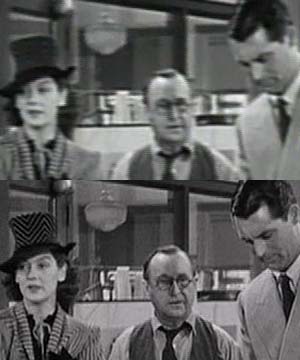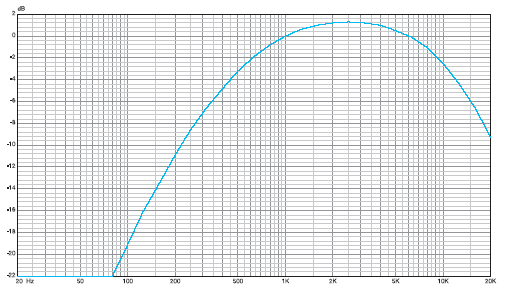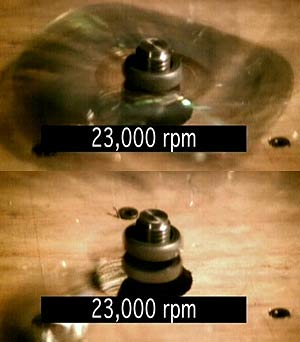Home Entertainment Blog Archive
Brought to you by your friendly, opinionated, Home Entertainment and Technology writer, Stephen DawsonHere I report, discuss, whinge or argue on matters related to high fidelity, home entertainment equipment and the discs and signals that feed them. Since this Blog is hand-coded (I like TextPad), there are no comments facilities. But feel free to email me at scdawson [at] hifi-writer.com. I will try to respond, either personally or by posting here emails I consider of interest. I shall assume that emails sent to me here can be freely posted by me unless you state otherwise.
This archive is for an uncertain period commencing Thursday, 3 February 2005
For the past few years I've been writing reviews for Australian HI-FI. Rather than let them merely die, I've started loading up onto this site. Just go here.
There are six reviews there now. But I've got another 42 which I shall upload over time, plus I do another review each month. So, to begin, we have Cruel Intentions, Dangerous Liaisons, Halloween, Halloween H2O, The Terminator and Terminator 2: Judgment Day.
 I have previously made reference
(Frankenstein and
Metropolis) to cheap and nasty, and good quality, DVD releases. The other day I bought one of the latter to replace yet another of the former.
I have previously made reference
(Frankenstein and
Metropolis) to cheap and nasty, and good quality, DVD releases. The other day I bought one of the latter to replace yet another of the former.
In this case it was His Girl Friday, a hilarious 1940 gabfest. The picture to the right shows the same frame grabbed from two different DVDs. The top one is from the Australian Rajon Vision release (under the branding 'Saturday Night at the Movies'). The bottom is from the Columbia Classics release. The differences need hardly be pointed out. Even the grey-scale in the Columbia release is more neutral than the other. As for sharpness, well ...
I should also note that while both are in PAL format, the Columbia Classics version has been freshly telecined for PAL, whereas the Rajon version seems to be a conversion to PAL from an NTSC source. Most of the frames show heavy interlacing, and the Rajon version is a few minutes longer (NTSC runs at the same speed as film, PAL 4% faster). For this demonstration, I actually picked a non-interlaced frame.
Zooming in on the Rajon version shows tiny skewed scan lines at many edges. This suggests to me that the source for the Rajon release was actually an NTSC VHS tape!
Oh, and the dialogue clarity (vital for a movie such as this) is hugely improved on the Columbia release.
So should you happen across a cheap DVD of a classic movie, should you buy it? Or wait until an original studio release comes out? Oh buy it of course! There is no guarantee a higher quality version will ever emerge!
Next good and bad DVD comparison: Todd Browning's Freaks.
When I was in my final year of primary school (aged around 11), I applied for a bursary (a kind of small scholarship). A teacher asked me about my reading habits and suggested that, for the purposes of winning the bursary, I was partaking of the wrong end of the library. That library had fiction at one end, non-fiction at the other. I was always at the latter end.
Duly directed, I scanned the books at the fiction end. The teacher had wanted me to read the appropriate fiction classics. Instead I looked for interesting novels. The two authors who I first came upon, and whose novels inspired in me a life-long love of reading, were Robert Heinlein and Andre Norton.
The former died in 1988. Now Norton has herself just passed away.
I failed to win the bursary. But having since read some of those classics, I'm glad I didn't read them at that time. I may have gained the bursary, but may also have failed to learn to love reading. Thank you Andre Norton.
I am happy to report that James Randi, best known as the magician/skeptic/author who eviscerates prominent self-proclaimed mystics, also spends the odd moment on audio mystics. For example, here on Peter Belt.
Follow some of the links from that post.
The aim of makers of high fidelity audio equipment is -- or at any rate, ought to be -- to produce equipment that does not modify the signal, other than convert it (from a digital to analogue representation, or from electrical to acoustical action) or amplify it. One component of this is having a totally flat frequency response. It may seem odd, then, that much of the technical measuring of audio equipment involves shaping the measured frequency response, using A-weighting.
 The purpose of this is to provide a
signal to noise ratio figure that more closely represents the human experience than a straight unfiltered measurement. The human ear is very much less sensitive to, for example,
bass frequencies, than it is to
midrange frequencies. Our ears are at their most sensitive around 3,000 to 4,000
hertz. A nasty noise produced by an amplifier in this range of frequencies is very much more intrusive than a deep bass hum.
The purpose of this is to provide a
signal to noise ratio figure that more closely represents the human experience than a straight unfiltered measurement. The human ear is very much less sensitive to, for example,
bass frequencies, than it is to
midrange frequencies. Our ears are at their most sensitive around 3,000 to 4,000
hertz. A nasty noise produced by an amplifier in this range of frequencies is very much more intrusive than a deep bass hum.
It is hard to find on the Web precisely what action an A-Weighted filter has. Happily, Greg Borrowman, the editor of Australian HI-FI (for which I write), is a true gentleman. Having researched the matter and generated the curves, he has given me permission to provide them to the world via this site.
So, for the A-weighting curve alone, download this 31kB PDF. If you want to explore further, you can download this 43kB PDF which has the A, B, C and D weighting curves. The last is a doozie. Greg says of it:
It was apparently used when measuring noise in avionics applications, because it penalised engines with lots of output (noise!) in the speech area.
I shall have to set up a download page for this kind of thing. Shall do so in the next few weeks to avoid people having to search the Blog archives.
UPDATE (Tuesday, 22 February 2005, 9:22 am): Greg also forwarded the underlying data for these curves in text files. The data is the decibel offsets from a flat response at one third octave intervals from 10 to 40,000 hertz. I've taken the liberty of stuffing them into an Excel spreadsheet and graphing them, in case someone may prefer to fiddle with the raw data. Right-click here to download the spreadsheet.
For the first time I can recommend a plasma display that retails for less than $AUS5,000. For years I've been whining about the 852 x 480 pixel resolution of so-called 'standard definition' plasmas as being unsuitable for Australian, Indian and European viewers, since our standard definition PAL system uses 576 vertical pixels.
Now Samsung has lowered the prices on its high resolution plasma displays. The 42 inch (107cm) 1,024 by 768 pixel model, PS42P4H, now has a recommended retail price of $AUS4,999. It's a pretty good set too. Here's what I wrote about it last year in a mini-review for Rolling Stone magazine (when the RRP was $AUS7,999):
This plasma TV from Samsung features a common high resolution for 42 inch panels (this one measures 1,076mm diagonally): 1,024 pixels across by 768 down. The frame surrounding the display area is about as thin as it's possible to get, making for a compact installation. It has a built-in analogue TV tuner and plenty of inputs. Two sets of component video for DVD player, plus composite video, S-Video, a computer video socket, and DVI for the best quality from DVD. Located on the side are convenient A/V inputs.Samsung has also lowered the price on its 1,366 x 768 pixel 50 inch (127cm) model, the PS50P4H, to $7,999, or the same price that the 42 inch model was just six months ago.The picture was excellent. Rich colours, good constrast ratio, no evident 'burn-in' and good handling of both video and film-sourced DVDs. But leave the Digital Natural Image engine (DNIe) switched off if you're watching 4:3 movies. This circuit stretches the dynamic range of the picture for greater contrast, but also applies to the grey bars on the sides of the screen in this mode, making them pulse disconcertingly in brightness.
Certainly Iron Chef is a quirky show. It appears each Saturday evening on Australia's SBS TV station. Even better is the information tag provided for this on digital TV:
This is not a program for learning how to cook. It is a feverish competition among world-class chefs "with the over-the-top appeal of pro wrestling". This week's secret ingredient: Carrot.
One problem with hard disk based MP3 players is gaps. You know those CDs where the music is continuous, even across the boundaries between tracks? When you play back an MP3 album in track order on an MP3 player, there are short pauses between each track.
At first I thought it was the player I happened to be using (the 60GB Creative Nomad Jukebox Zen Xtra), but then I closely examined the MP3 files themselves. It seems that all of the MP3 encoders I use add a little silence at each end of each track. The worst case I've found so far is 0.057 seconds at the start, and 0.127 seconds at the end, producing a brief but noticable gap nearly two tenths of a second in length. Another encoder only added 0.027 seconds at each end. Still a pain.
Maybe that's a reason to use some other competing format, such as WMA.
As a professional writer, I can't help but feel skittish about the world class amateur writing appearing so prolifically in Blogs these days. Take this review of Gibson's The Passion of the Christ for example. None of the reviews I read in the old media come close to the depth and erudition of this one. Don't stop there. Read the more about all sorts of stuff on The Currency Lad.
I've been startled about how few people seem to get The Passion. Traditional Catholicism placed enormous weight in the redemptive power of Christ's sacrifice.
I remember an interview decades ago with the makers of Superman: The Movie. They made the point that, with The Six Million Dollar Man appearing on TV screens every week, Superman's exploits had to literally world turning. And so it is with the pain and suffering of Christ. For Gibson's emphasis on Christ's suffering to carry any weight, it had to obviously exceed the suffering of characters routinely appearing in modern movies. The heyday of religious movies pre-dated graphic Peckinpahishness, and so could be more restrained while remaining shocking.
Busy doing reviews of hard disk based portable MP3 players. You know the thing. The Apple iPod and its competition. Except for one small problem.
Apple, here in Australia, has a policy of not providing review samples of the iPod for the purposes of comparative reviews. Only for standalone reviews.
Why? With Apple's current market dominance, it's probably not interested in assisting in giving the competition any exposure. From this reviewer's point of view, though, it simply means that:
- iPod is going to miss out on a couple of reviews (actually, three because one of my editors says that we'll replace a planned iPod standalone review with something else); and
- I find myself unable to recommend iPod in preference to, say, the 60GB Creative Nomad Jukebox Zen Xtra, with which I'm presently mightily impressed.
 Since it started up on
SBS here in Australia a few weeks ago, I've been keenly watching
MythBusters. Scientists the guys aren't, but I do like the way they just whip up a test rig from whatever they have laying around. In case you haven't seen it, each week the two chaps take about three urban legends and put them to the test. Will a mobile phone ignite a petrol station? No. Will eating several poppy-seed buns make you show positive on a narcotics screening test? Yes.
Since it started up on
SBS here in Australia a few weeks ago, I've been keenly watching
MythBusters. Scientists the guys aren't, but I do like the way they just whip up a test rig from whatever they have laying around. In case you haven't seen it, each week the two chaps take about three urban legends and put them to the test. Will a mobile phone ignite a petrol station? No. Will eating several poppy-seed buns make you show positive on a narcotics screening test? Yes.
Last week the final segment was testing the Killer CDs myth. Will CDs blow up from centrifugal forces if spun too fast? Well, of course. Anything will blow up if spun too fast. The picture to the right shows two sequential frames from a high speed camera they used to record the demise of a damaged CD (it had been microwaved!).
Unfortunately, they left the impression that a 52x CD ROM drive actually works at 52x. In fact, it works up to 52x, and generally much slower, because it is designed not to go much above 10,000 RPM.
You can read my analysis of this issue here.
This episode of Mythbusters will be repeated on Monday (7 Feb) at 5pm.
No excuses, but I'm back for the time being.